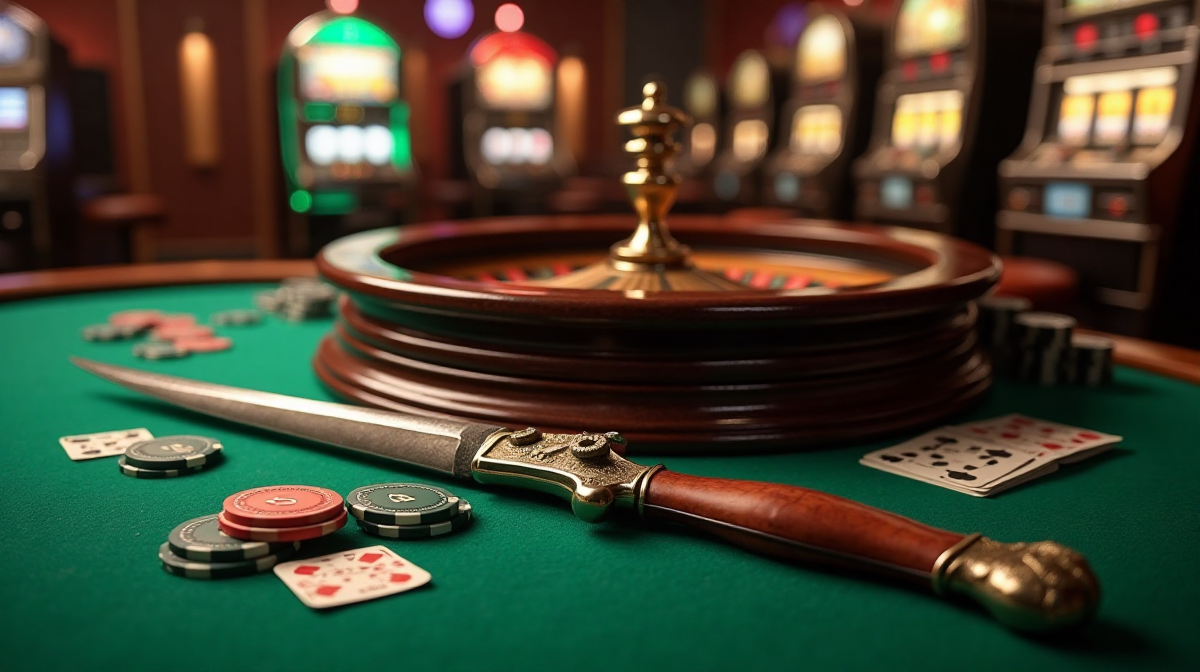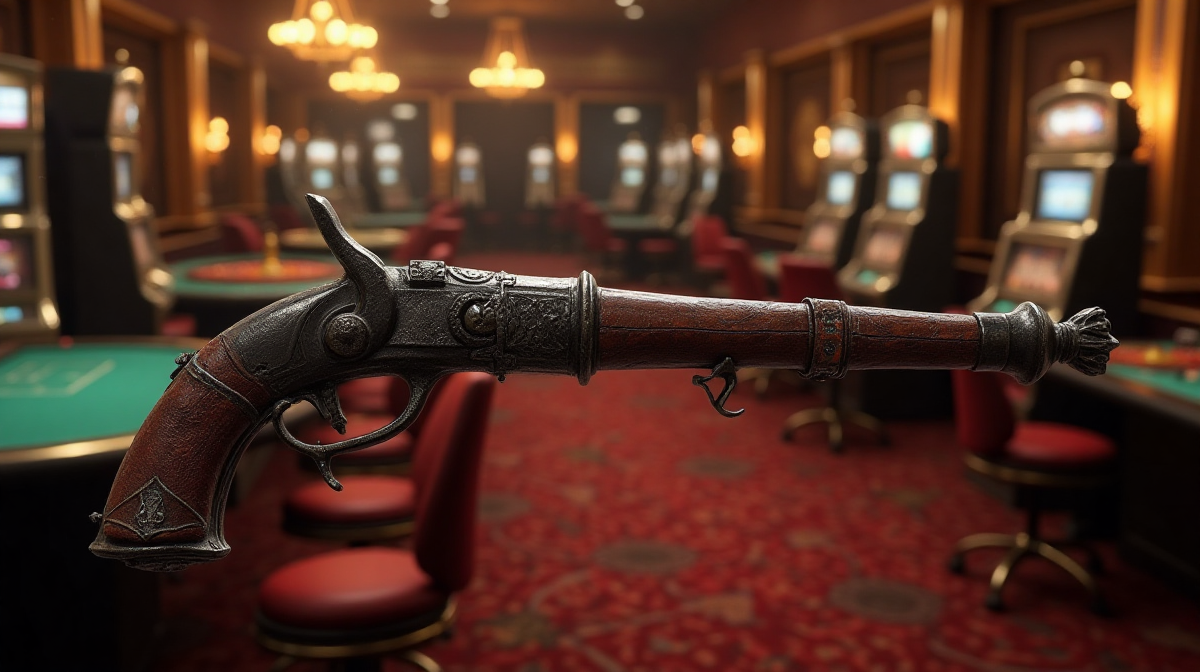Blackjack Weapon: Myths & Real-Life Stories
What is a Blackjack? Defining the Weapon - History & Basic Components
The blackjack, a deceptively simple weapon, has a history as complex and often shadowed as its use. At its core, a blackjack consists of a weighted head – historically made of lead, but also steel or even tightly wrapped fabric – attached to a handle, typically wood, metal, or rubber. The purpose is straightforward: to deliver a concentrated, blunt-force impact. The effectiveness of a yippee bet can be compared to the impact of a blackjack – a quick, decisive result is often desired. Early forms of the blackjack date back centuries, evolving from simple weighted clubs used for self-defense.
Popular Culture’s Portrayal – The Blackjack in Film, Literature & Gaming
From the shadowy figures of Victorian London to pulp fiction heroes, the blackjack has frequently appeared in popular culture. Often depicted as a favored weapon of thieves and enforcers, it's portrayed as a quick, silent, and brutal tool. This imagery is further reinforced in gaming, where it sometimes appears as an item in role-playing games or as a weapon in action titles. The allure of this weapon is undeniable, but the reality often diverges from the dramatized depiction. This is especially true when considering the thrill of a game like blackjack vip, where strategy and luck combine, a contrast to the direct force of the weapon.
Dispelling Initial Myths – Common Misunderstandings about Blackjacks & Their Use
Many misconceptions surround the blackjack. It is not a guaranteed knockout weapon, nor is it always silent. Its effectiveness relies heavily on proper technique, target selection, and the element of surprise. The idea that it's a simple tool for instant incapacitation is a dangerous oversimplification, much like believing a single hand in yippee bet nigeria always guarantees a win.
Early Origins: 16th-19th Century – Slungshot & Early Forms
The origins of the blackjack can be traced to various weighted impact weapons used throughout history. The slungshot, a leather pouch containing stones or lead shot attached to a handle, was a precursor. These early forms were primarily used by commoners for self-defense, particularly by those who couldn’t afford swords or other more expensive weapons. By the 18th and 19th centuries, more refined versions began to emerge, often utilized by travelers and coachmen for protection against highwaymen.
The Rise of the “Coshes” – Victorian England & It's Criminal Underworld
Victorian England saw the rise of the cosh, a type of blackjack favored by criminals. These were often concealed easily and used in street robberies and assaults. The cosh became synonymous with the criminal underworld, often associated with gangs and illicit activities. The era's literature and police reports documented numerous instances of cosh attacks, solidifying its reputation as a weapon of choice for those operating outside the law. This period saw a significant increase in the demand for discreet and effective weapons, much like the growing popularity of convenient betting options like the yippee bet app download latest version.
Law Enforcement Adoption – Late 19th & Early 20th Century: Policing America & Beyond
Ironically, the very weapon favored by criminals also found its way into the hands of law enforcement. In the late 19th and early 20th centuries, police forces in America and other countries began adopting blackjacks as a non-lethal method of subduing suspects. Officers found them to be effective for quickly incapacitating individuals without resorting to firearms. However, their use was often controversial, leading to accusations of excessive force.
Military & Paramilitary Applications – Limited Use in Specific Scenarios
The military use of the blackjack was relatively limited. While some military police units and special forces occasionally employed them for close-quarters control or riot suppression, they were never a standard issue weapon. Their effectiveness was often outweighed by the risks associated with potential injuries, and the advent of more reliable non-lethal alternatives reduced their appeal.
Decline in Official Use – Factors Contributing to Decreasing Popularity
The latter half of the 20th century witnessed a decline in the official use of blackjacks. The development of tasers, pepper spray, and other non-lethal weapons offered officers more controlled and less potentially damaging options. Increased scrutiny regarding police use of force and stricter regulations also contributed to the decline.
Core Components: Handle Materials & Weighted Head Materials
A typical blackjack comprises two key components: the handle and the head. Handles are traditionally crafted from wood (often hickory or oak), metal (steel or aluminum), or rubber. The choice of material impacts grip, durability, and overall weight distribution. The weighted head, responsible for delivering the impact, has historically been made of lead due to its density and affordability. However, steel is also common, offering greater durability. Modern variations may use synthetic materials to replicate the weight and impact of traditional materials.
Common Blackjack Types:
Classic Leather-Covered Blackjack - Materials & Construction
The classic leather-covered blackjack is arguably the most recognizable type. It features a weighted head encased in leather, attached to a wooden or metal handle. The leather covering serves to distribute the impact force and protect the head from damage. Construction involves carefully shaping the weighted core, securing it within the leather, and attaching it firmly to the handle.
Metal-Handle Blackjacks - Variations & Use Cases
Metal-handle blackjacks are known for their durability and strength. These typically feature a solid metal handle, often with a textured grip, and a weighted metal head. They are often favored by those seeking a more robust and reliable weapon. Some designs incorporate innovative features like spring-loaded mechanisms.
Flexible/Slap Jacks – Variations and their distinct application
Slap jacks, also known as flexible blackjacks, are characterized by a flexible handle, often made of leather or a similar material. This flexibility allows the user to deliver a quicker, “slapping” blow. They are often used for quick, close-range strikes.
Specialized/Custom Blackjacks – Examples & Notable Features
Custom blackjacks cater to specific needs or preferences. These may feature unique handle materials, specialized head designs, or integrated features like hidden compartments. Collectors often seek out rare or historically significant custom-made blackjacks.
Myth #1: Instant Knockout Power - Realistic Impact & Concussion
The myth of the instant knockout is perhaps the most pervasive. While a well-placed blow from a blackjack can cause incapacitation, it is rarely instantaneous. The impact can cause concussion, pain, and temporary disorientation, but a full knockout requires significant force delivered to a vulnerable point. The effectiveness depends on factors like the user's strength, the target's physiology, and the angle of impact.
Myth #2: Silent & Undetectable Weapon - Sound and Visual Considerations
The notion that a blackjack is a silent weapon is also false. While quieter than a gunshot, a blackjack strike produces a distinct sound. The sound of the impact, combined with the potential for shouting from the victim, makes it far from silent. Furthermore, the weapon itself is not entirely undetectable, especially when concealed.
Myth #3: “Non-Lethal” is Guaranteed - Risks of Serious Injury & Potential for Fatality
The term “non-lethal” is a misnomer. While a blackjack is intended to incapacitate rather than kill, improper use or a particularly forceful blow can cause serious injuries, including skull fractures, brain damage, and even death. The risks are exacerbated when targeting sensitive areas like the head or neck. The allure of quick gains, similar to the excitement of blackjack vip, shouldn't overshadow the potential for severe consequences.
Technique & Training: The Importance of Proper Swing & Targetting
Effective use of a blackjack requires proper technique and training. A controlled swing, focusing on delivering force to non-vital areas, is crucial. Training should emphasize target selection, grip, and the importance of avoiding excessive force.

Effectiveness Against Armor – Limitations & Vulnerable Points
The effectiveness of a blackjack is significantly reduced against armor. Even soft body armor can absorb a significant portion of the impact force, minimizing the likelihood of incapacitation. Vulnerable points, such as the joints and unarmored areas, may still be targeted, but the risk of injury increases.

Notable Crimes & Assaults – Historical Case Studies
Throughout history, blackjacks have been implicated in numerous crimes. The 19th and early 20th centuries saw a surge in reports of “coshings” in London, where victims were attacked and robbed with coshes. These cases often involved brutal assaults, leaving victims with severe injuries. Detailed investigations often focused on identifying the perpetrators and recovering the weapons.
Police Use of Force Incidents – Examining Controversial Cases & Legal Outcomes
The use of blackjacks by law enforcement has been the subject of numerous legal battles. Cases involving excessive force or improper use have sparked public outcry and led to policy changes. Legal outcomes often hinged on whether the officer’s actions were deemed reasonable and necessary under the circumstances.
Self-Defense Scenarios – Documented Instances of Civilian Use
Documented instances of civilians using blackjacks for self-defense are relatively rare. However, some cases have been reported where individuals successfully used them to deter attackers or protect themselves from harm. These cases often involve a clear and immediate threat to life or safety.
Blackjacks in Espionage & Covert Operations –
Information regarding the use of blackjacks in espionage and covert operations is limited and often speculative. However, it’s plausible that intelligence agencies have occasionally employed them as discreet tools for subduing targets or extracting information.
Current Legal Status – Variations by Country/State/Region. Restrictions & Penalties
The legal status of blackjacks varies significantly by location. In many jurisdictions, they are classified as prohibited weapons, meaning their possession or sale is illegal. Other areas may permit ownership but restrict their carry in public. Penalties for violating these laws can range from fines to imprisonment. Understanding local regulations is crucial before possessing or using a blackjack. This is similar to understanding the rules and regulations surrounding sites like yippee bet nigeria before participating.
Modern Non-Lethal Alternatives – Taser, Pepper Spray, Baton – Advantages & Disadvantages compared to the Blackjack.
Modern non-lethal alternatives, such as tasers, pepper spray, and batons, offer several advantages over blackjacks. Tasers provide a remote incapacitation option, while pepper spray causes temporary blindness and respiratory distress. Batons offer a longer reach and greater control. These alternatives are generally considered safer and more effective than blackjacks, reducing the risk of serious injury.
Remaining Niche Uses – Security Professionals, Collectors, Historical Reenactments.
Despite their declining use in law enforcement, blackjacks still find niche applications. Security professionals may use them in specific circumstances, such as controlling unruly crowds. Collectors seek out antique or historically significant blackjacks. Historical reenactors utilize them to accurately portray periods where they were commonly used.
Ethical Considerations - Discussion of appropriate and inappropriate uses.
The use of a blackjack raises significant ethical concerns. It should only be considered as a last resort, in situations where there is an immediate threat to life or safety. Using a blackjack for aggression or unnecessary force is ethically reprehensible and legally punishable. The potential for harm must always be weighed against the need for self-defense.
Summarizing the Blackjack’s place in history and modern culture.
The blackjack occupies a unique and often contradictory place in history and modern culture. Once a common tool for both criminals and law enforcement, it has largely fallen out of favor due to the development of more effective and less dangerous alternatives. However, its enduring image as a weapon of intimidation and force continues to fascinate and disturb.
Final thoughts – Its continued fascination & the importance of understanding its reality versus its myth.
The continued fascination with the blackjack stems from its simplicity, its historical associations, and its portrayal in popular culture. However, it's crucial to understand the reality of this weapon – its limitations, its potential for harm, and its ethical implications – rather than perpetuating the myths that surround it. Much like the perceived ease of winning with a yippee bet, the blackjack’s effectiveness is often overstated, and its consequences underestimated.

